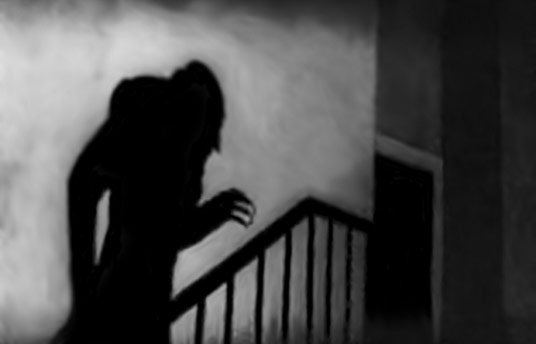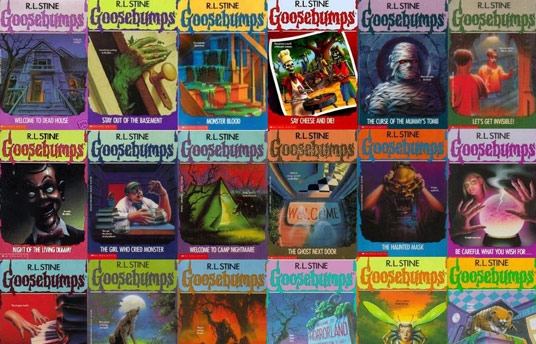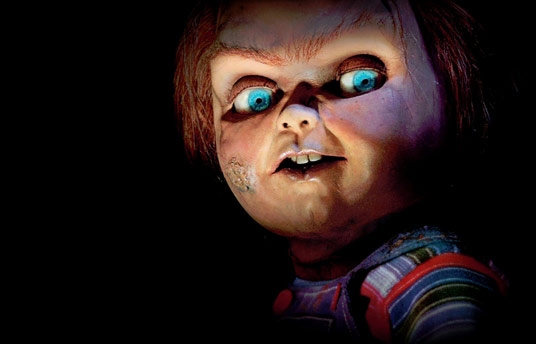Why We Watch Horror
Mar 04, 2013

By Alexander Wood
Everyone has hidden in a closet making barely audible groans, only emerging to frighten an unsuspecting target. The thrill of scaring someone is a guilty pleasure that audiences and filmmakers share, and since the development of the motion picture there has been a magnetic attraction to all things horrific. Whether you are a fan of ‘The Cabinet of Dr. Caligari’ , ‘Nosferatu‘ or more modern interpretations of horror like ‘Paranormal Activity’ , horror films share a commonality that draws audiences into the theatre. This desire to be afraid, very afraid, has been a subject for many psychologists and couch-based theorists, thus this article is going to shed some light into the dimly lit basement that is calling our name—and find out why we are gluttons for horrific punishment.

Many fans of film or television horror began experiencing the genre in the form of books, whether R.L. Stine’s ‘Goosebumps’ , Edgar Allen Poe’s ‘The Raven’ , or your father telling you the haunting tale of ‘The Man with a Golden Hand’ by campfire. Horror is part of our collective culture and we have been exposed to it since we were children. Folk tales, Halloween and playing Bloody Mary all helped instill fear into our consciousness, only to be reawakened through horror films.

Any film that is crafted to inspire fear stimulates one of the oldest parts of our brain and many studies have found that the emotions viewers experience while viewing a film are the same as if the situation were happening in real life. If you happen to be run down by a chainsaw-wielding maniac on your way home from work today, it turns out that the fear you would feel is the same as if you witnessed it in a film. Glenn Sparks is a professor of communication at Purdue University, and has been passionately engaged in studying the effects of horror films on viewers’ physiology. By observing how the body reacts to horrific images, Sparks noted that viewers’ heartbeat increases as much as 15 beats per minute, their palms sweat, skin temperature drops, muscles tense, and blood pressure spikes.
‘The brain hasn’t really adapted to the new technology [of movies],’Sparks explains. ‘We can tell ourselves the images on screen are not real, but emotionally our brain reacts as if they are…our “old brain” still governs our reactions.’ The amygdala is one of the oldest parts of our brain and is largely responsible for our fight or flight response; the feeling we get to defend ourselves or run when we see ‘Chucky’) running at us with a knife. Regardless if the stimulus is on film or in real life our brain’s reactions are very similar. Sensory data received by our eyes and ears are transmitted to the amygdala, which helps in the processing and memory of emotional reactions. Once your brain perceives danger it releases adrenaline, noradrenaline, and the steroid cortisol – all of which are responsible for that feeling we get when skydiving, driving really fast, or taking a seat on the world’s largest roller coaster.

That being said, as we purchase a ticket for our favourite horror flick we are well aware that the visuals and scenes to come will be frightening. As a result of consciously knowing that there is going to be no real danger, we’re able to enjoy and ride the natural high provided for us by the sympathetic nervous system. Also by being somewhat aware of the events to come, our imagination is pushed into overdrive, and we try to envision and prepare ourselves for the horror around the next corner, adding to the enjoyment of watching.
However, horror films aren’t just neurotransmitters and good times; some studies have shown that such films can have lasting negative effects. Joanne Cantor, Professor Emerita and Outreach Director at the Center for Communication Research at the University of Wisconsin-Madison, found that nearly 60 percent of viewers reported that something they had watched before age 14 had caused disturbances in their sleep or waking life. Cantor has collected hundreds of essays by students who develop fears as a result of the films they have watched. More than a quarter of the students said they were still fearful of images they saw years earlier.
Before you grab a big bucket of caramel corn and head into the cinema with an impressionable youngster or a fearful adult, you might want to consider the above effects. That being said, many of the seasoned horror enthusiasts reading this will scoff at such a statement and continue watching their Nightmare on Elm Street marathon. Less hardened viewers, should heed these words of caution–or else they may wake in the middle of the night to noises of something shuffling, calling out for them.